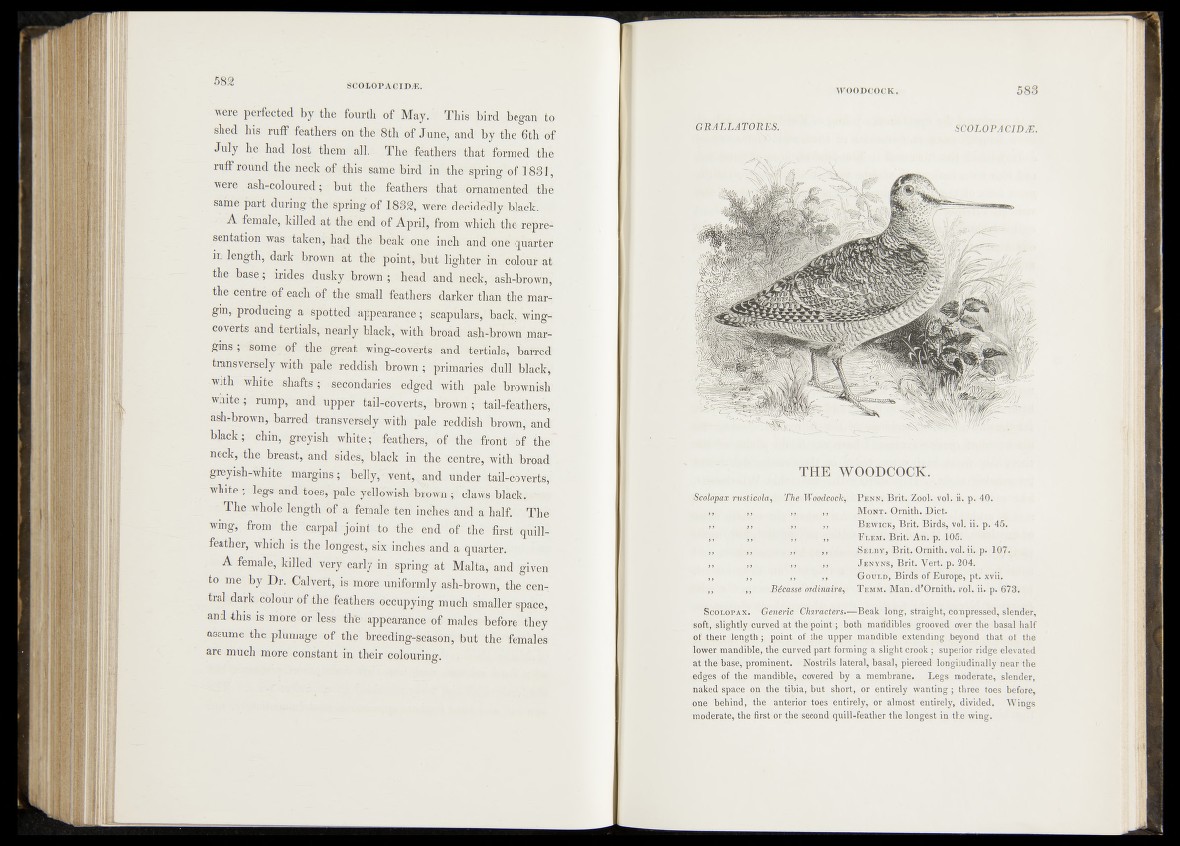
were perfected by the fourth of May,- This bird began to
shed his ruff feathers on the 8th of June, and by the 6th of
July he had lost; them all. The feathers that formed the
ruff round, the neck .of this same bird in '.the spring of #|gj8i,
were ash-coloured-; but the feathers -that ornamented the
same part during the spring‘of 1882, were decidecQy black.
A female, killed at the end of April, from which the representation
was taken, had the beak o®e inch and one-quarter
in length, dark brown at the point, but lighter in colour ut
the base; irides dusky thrown ; 7vheSd and neGk, ash-brown.,
the centre of each of the small feathers darker than:the mar-
gin, producing a spotted .appearance; - scapulars/ back* :wi-ng-
coverts and tertials, nearly black, with broad ash-brown ,mar*
gins; some of the great wing-coverts and ■ tertials, hatred
transversely with pale' reddish brown ; primaries?«d'MN)lack»
with white shafts ;■ ^secondaries edged with pale brown ilk*
whiter rump, and upper tail-coverts, brown ; tail-feathers,
ash-brown, barred transversely with pale reddish-brown, and?
black; chin, greyish white; feathers*. -Of'theUfront of ther
neck, the breast, and sides, black in the Centre, with broad
greyish-white margins; belly, vent,,^nd under tail4 overtSv
white; ' daws ‘black g p
‘ The whole length of a female ten inches and a halffc/ The
wing, from the carpal joint to-the end of» t'he first, q€ill-
feather, which is the longest, six inches and a quarter.
A female, killed very early in spring at Malta, and given
to me by Dr. Calvert, is more uniformly ash-brown, the central
dark colour of the feathers occupying much smaller space,
and this is mbre'or less th*e appearance of males before they
assume the plumage of the breeding-season, but the females
are much more constant in their colouring.
G'BA LLATORESÎ SCOLOPACIDÆ.
T H E WOODCOCK.
The Woodcock^
Bécasse ordinaiiey
Pens. Brit. Zool. vol. ii. p. 40.
Mont. J^nith*JO iefo «
BEWicK,Brit. Birds, vol. ii. p. 45.
FEEKpJ'-hrit. An. p; I05t |
S e l by , Bi4|. :(^||fth. vol. ii. p. 107. .
J^ENYNS-Brit. Vert. p. 204.
Wimf i), Birds of Europe, pt.’ xvii.
T emm. Man. d’Ornith. vol. ii. p. 673.
‘Scolopax. “Generic Characters.—Beak lbng*, strai^lt-vcompressed, slender,
soft, slightly-'Gurvediat the point-; both maifdibles grooved over the basal half
of theirJenpft>t poinLof the upper mandible 'extending beyond that of the
lower mandible, the curved part forming a slight crook; superior ridge elevated
at the base, prominent. Nostrils lateral, basal, pierced longitudinally near the
edges of the mandible, covered by a membrane. Legs moderate, slender,
naked space on tJws'~tibia, but sl).art,- or entirely wanting; three toes before,
one behind, the anterior toes entirely, or almost entirely, divided. Wings
moderate, the first or the second quill-feather the longest in the wing.